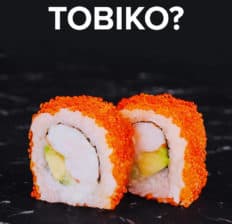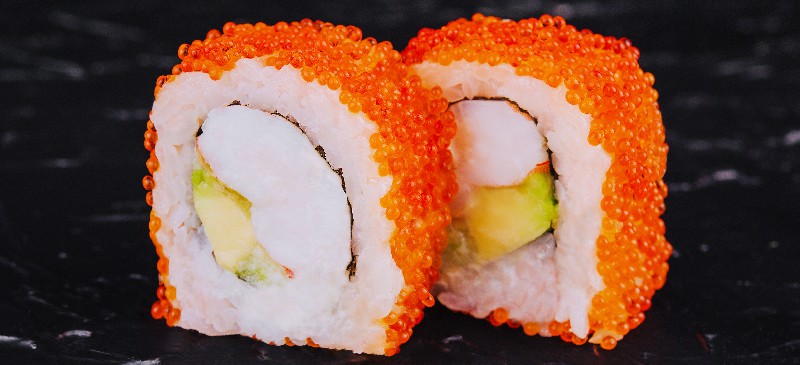Fact Checked
This Dr. Axe content is medically reviewed or fact checked to ensure factually accurate information.
With strict editorial sourcing guidelines, we only link to academic research institutions, reputable media sites and, when research is available, medically peer-reviewed studies. Note that the numbers in parentheses (1, 2, etc.) are clickable links to these studies.
The information in our articles is NOT intended to replace a one-on-one relationship with a qualified health care professional and is not intended as medical advice.
This article is based on scientific evidence, written by experts and fact checked by our trained editorial staff. Note that the numbers in parentheses (1, 2, etc.) are clickable links to medically peer-reviewed studies.
Our team includes licensed nutritionists and dietitians, certified health education specialists, as well as certified strength and conditioning specialists, personal trainers and corrective exercise specialists. Our team aims to be not only thorough with its research, but also objective and unbiased.
The information in our articles is NOT intended to replace a one-on-one relationship with a qualified health care professional and is not intended as medical advice.
April 29, 2023



You see them on top of sushi rolls or added to Japanese cuisine for texture and color. Tobiko, or fish eggs, are commonly used as a garnish and offer a range of nutrients, including protein, vitamin D and vitamin B12.
While they can be considered healthy when consumed in moderation, tobiko is high in sodium and, like all raw fish, may cause foodborne illness, so there are some potential risks to look out for when adding these bright orange fish roe to meals.
What Is Tobiko?
Tobiko is a type of fish roe, or eggs, commonly used in Japanese cuisine, particularly in sushi dishes. It comes from the flying fish (Exocoetidae) and is known for its bright orange color, delicate texture and mildly sweet taste.
Tobiko is often used as a garnish or topping in various sushi rolls, such as California rolls or maki rolls, adding a subtle crunch and pop of color. It can also be flavored with ingredients like wasabi, yuzu or squid ink to create variations in taste and appearance.
Tobiko vs. Masago
Tobiko and masago are both types of fish roe used in Japanese cuisine, particularly in sushi dishes. However, they come from different fish and have distinct characteristics in terms of size, color, texture and taste.
Ad


Here is a comparison between the two:
- Type of fish eggs: Tobiko comes from the eggs of flying fish (Exocoetidae), while masago comes from the eggs of capelin (Mallotus villosus), a small fish found in the Arctic and North Atlantic oceans.
- Size and texture: Tobiko is slightly larger than masago, and its eggs are firmer and have a crunchy texture when eaten. Masago is smaller and has a slightly softer texture compared to tobiko.
- Color and appearance: Tobiko has a bright orange color, and masago is a more muted pale orange or yellow color.
- Taste: Tobiko has a mild, slightly sweet taste, and masago has a more pronounced briny, oceanic taste.
- Cost and sustainability: Tobiko is typically more expensive than masago due to its larger size, vibrant color and more appealing texture. Because masago is more affordable, it’s often used as a substitute for tobiko in sushi restaurants. It is also considered more sustainable, as capelin is more abundant and has a faster reproduction rate than flying fish.
Nutrition Facts
Tobiko, like other fish roe, is a nutrient-dense food that contains proteins, vitamins and minerals. The exact nutritional content can vary depending on the source and any added ingredients, but one tablespoon (about 15 grams) of tobiko contains roughly the following:
- 30–40 calories
- 1 gram carbohydrates
- 3–4 grams protein
- 2–3 grams fat
- 30 milligrams omega-3 fatty acids
- 75 milligrams cholesterol
- 95 milligrams sodium
- Zero sugars
In addition to macronutrients, this fish roe also contains small amounts of essential vitamins and minerals, such as vitamin A, vitamin B12, vitamin D, vitamin E, selenium and iodine. It’s worth noting that while tobiko is a nutritious food, it should be consumed in moderation due to its high cholesterol and sodium content.
READ RELATED: Why Eating Beans Is One of the Easiest Ways To Boost Your Longevity
Potential Benefits
Tobiko, as a nutrient-dense food, offers a number of potential health benefits when consumed in moderation. Some of these benefits include:
1. High-Quality Protein
Tobiko is a good source of complete protein, which means it contains all nine essential amino acids required for proper body function. A high-protein diet is important for building and maintaining muscle mass, managing a healthy weight, supporting immune function, and repairing tissues.
2. Omega-3 Fatty Acids
This sushi ingredient contains small amounts of omega-3 fatty acids, which have been associated with a variety of health benefits, such as improving heart health, supporting brain function and reducing inflammation.
3. Vitamins and Minerals
Tobiko provides several essential vitamins and minerals, including vitamins A, B12, D and E; selenium; and iodine. These nutrients play crucial roles in various bodily functions, such as supporting the immune system, maintaining healthy vision and promoting proper thyroid function.
4. Low in Calories and Carbohydrates
With relatively low calorie and carbohydrate content, tobiko can be a suitable addition to various diets, including low-carb and weight management plans.
Risks and Side Effects
While tobiko can provide certain nutritional benefits and is often consumed in smaller amounts because of its use as a garnish, there are also potential risks and side effects associated with its consumption, such as:
1. Allergies
Individuals with fish or seafood allergies may have an allergic reaction to tobiko, as it is derived from fish eggs. Symptoms of an allergic reaction can include itching, swelling, hives, difficulty breathing or even anaphylaxis in severe cases.
If you have a known fish or seafood allergy, it is best to avoid consuming tobiko.
2. Foodborne illness
As with other raw or undercooked seafood products, there is a risk of foodborne illness when consuming tobiko. To minimize the risk, ensure that you purchase it from reputable sources and follow proper food-handling and storage guidelines.
3. Mercury and Other Contaminants
Fish and seafood can sometimes contain mercury and other environmental contaminants. While tobiko is typically lower in mercury compared to larger fish, it is still important to consume it in moderation to avoid excessive exposure.
4. Pregnancy Concerns
Pregnant women should be cautious when consuming raw or undercooked seafood, including tobiko, due to the risk of foodborne illnesses that can harm both the mother and the fetus. Additionally, high mercury levels in some fish can be harmful to the developing fetus.
5. High Sodium
One possible downside of eating tobiko is its sodium levels. Some varieties can contain up to 10 percent of your daily recommended intake for sodium, and consuming too much of this mineral can contribute to high blood pressure and other cardiovascular issues.
Ad


People on sodium-restricted diets or those with hypertension should be cautious about consuming tobiko and other high-sodium foods.
In general, it is important to consume this food in moderation and follow proper food-handling and storage practices to minimize potential risks and side effects.
Healthy Alternatives
If you’re looking for healthy alternatives to tobiko that still provide similar flavors and textures, consider the following options:
- Masago: Masago is another type of fish roe that’s similar in taste and texture to tobiko but with a more muted color and a slightly stronger oceanic flavor. Masago is typically more affordable and sustainable than tobiko.
- Avocado: For a vegetarian alternative, avocado can provide a creamy texture and a rich, mild flavor that compliments sushi and other dishes. Avocado doesn’t mimic the texture of tobiko, but it’s an excellent source of healthy monounsaturated fats, fiber and various vitamins and minerals.
- Quinoa or couscous: For a different approach, but with the texture of tobiko in mind, try cooked quinoa or couscous. These provide a similar texture and add a mild nutty flavor to sushi rolls or other dishes. Plus, these grains are good sources of protein, fiber and essential nutrients.
- Vegetarian or vegan caviar: There are plant-based alternatives to fish roe available, often made from seaweed extracts, algae or other plant-based ingredients, used to make vegan sushi. These products aim to replicate the texture and flavor of fish roe, while being completely vegan and more environmentally friendly.
- Chia seeds or black sesame seeds: For a crunchy texture similar to tobiko, you can use chia seeds or black sesame seeds as a topping or garnish. While they don’t offer the same flavor as fish roe, they provide added texture and are a good source of fiber, healthy fats and other nutrients.
When choosing alternatives to tobiko, consider the flavor profile, texture and nutritional value of the substitute to ensure it complements the dish and meets your dietary needs.
Conclusion
- Tobiko is a type of fish egg commonly used in Japanese cuisine, particularly in sushi dishes. It comes from the flying fish and is known for its bright orange color, delicate texture and mildly sweet taste.
- Tobiko, like other fish roe, is a nutrient-dense food that contains proteins, vitamins and minerals, including vitamins D and A. It is, however, also relatively high in sodium and should only be consumed in moderation.
- Some potential benefits of tobiko include its protein and micronutrient content, and that it’s low in calories and carbohydrates.
- Potential side effects of tobiko include allergies, foodborne illness and excessive consumption of sodium.
!function(f,b,e,v,n,t,s)
{if(f.fbq)return;n=f.fbq=function(){n.callMethod?
n.callMethod.apply(n,arguments):n.queue.push(arguments)};
if(!f._fbq)f._fbq=n;n.push=n;n.loaded=!0;n.version=’2.0′;
n.queue=[];t=b.createElement(e);t.async=!0;
t.src=v;s=b.getElementsByTagName(e)[0];
s.parentNode.insertBefore(t,s)}(window, document,’script’,
‘
fbq(‘init’, ‘3475171552810057’);
fbq(‘track’, ‘PageView’);




